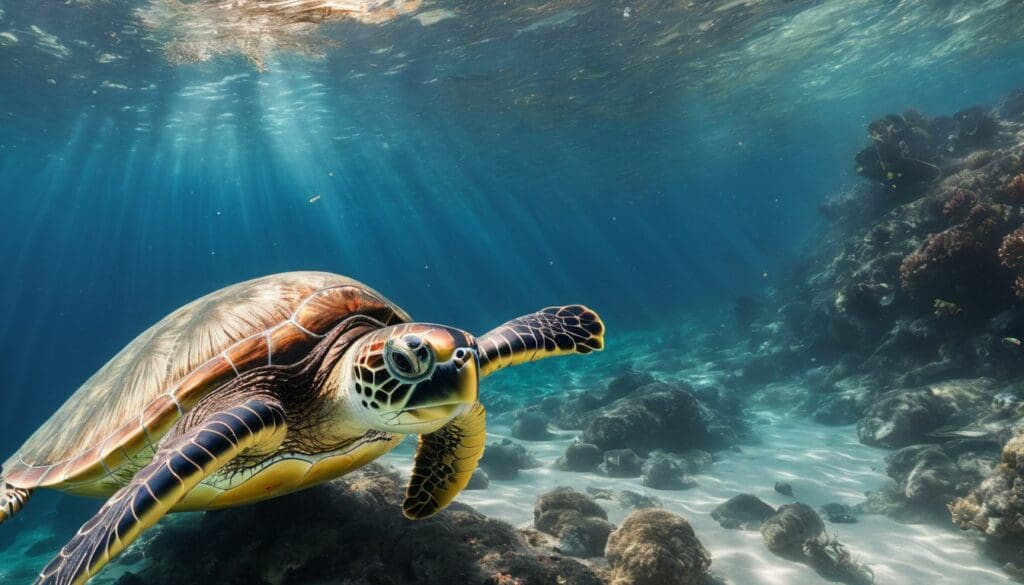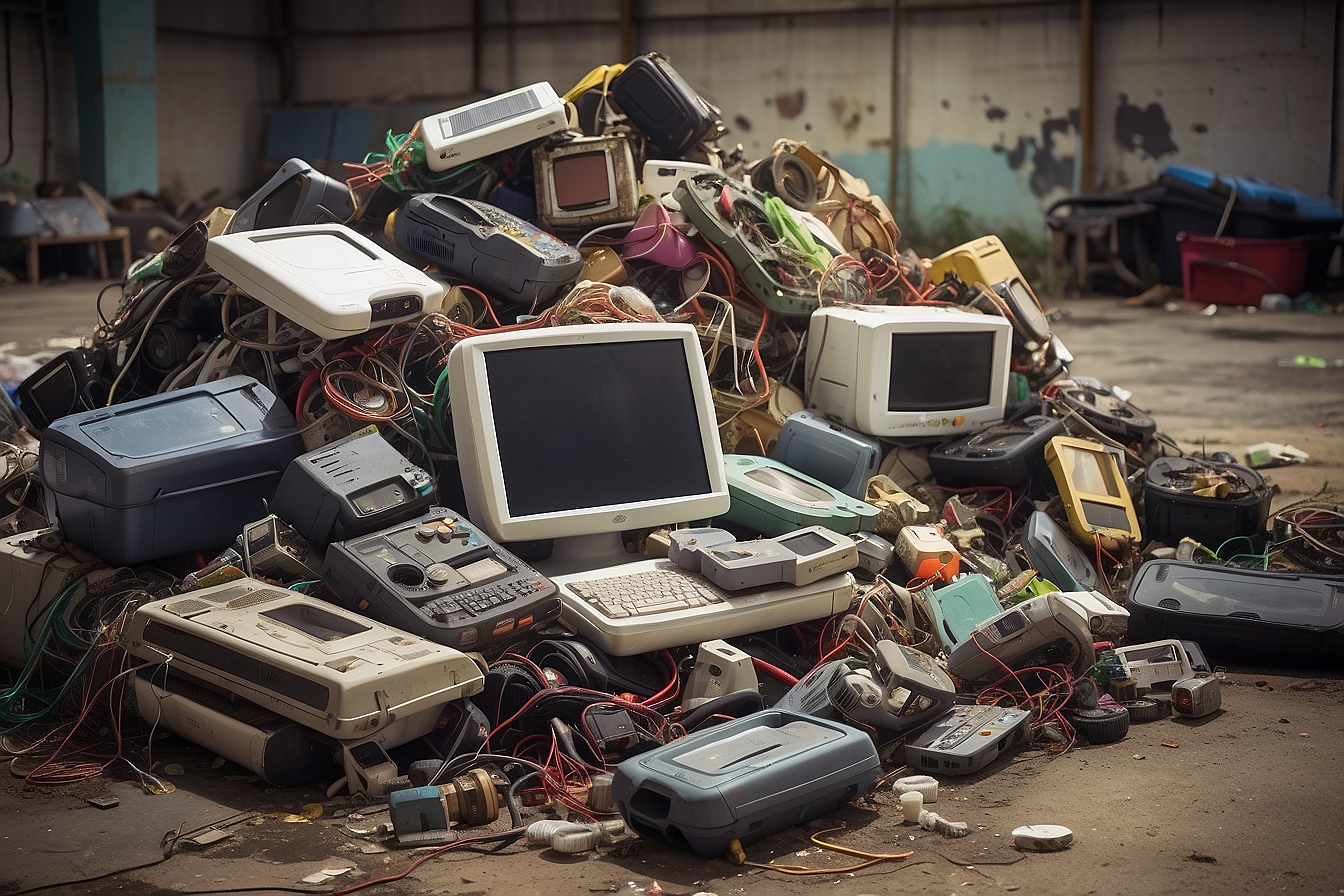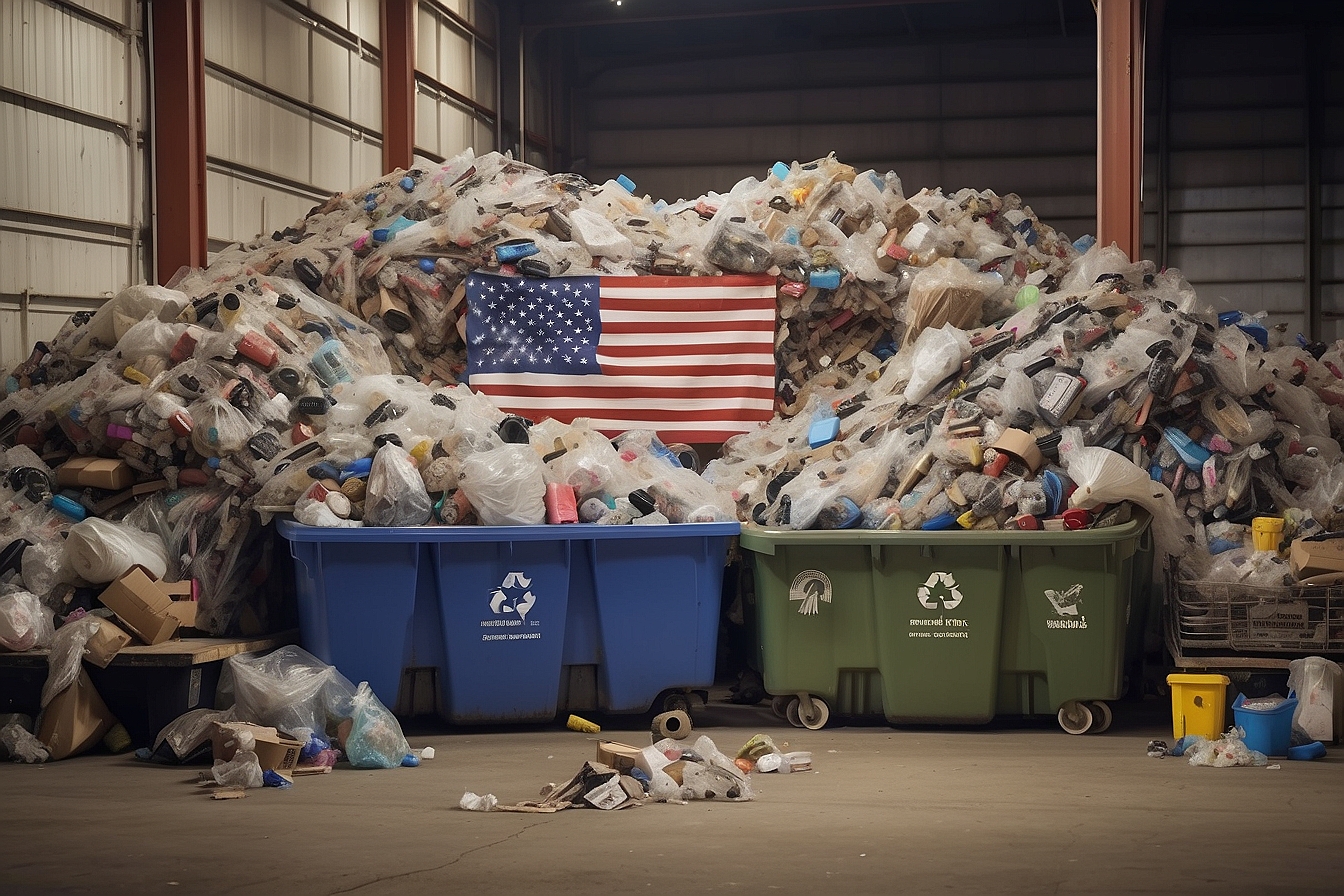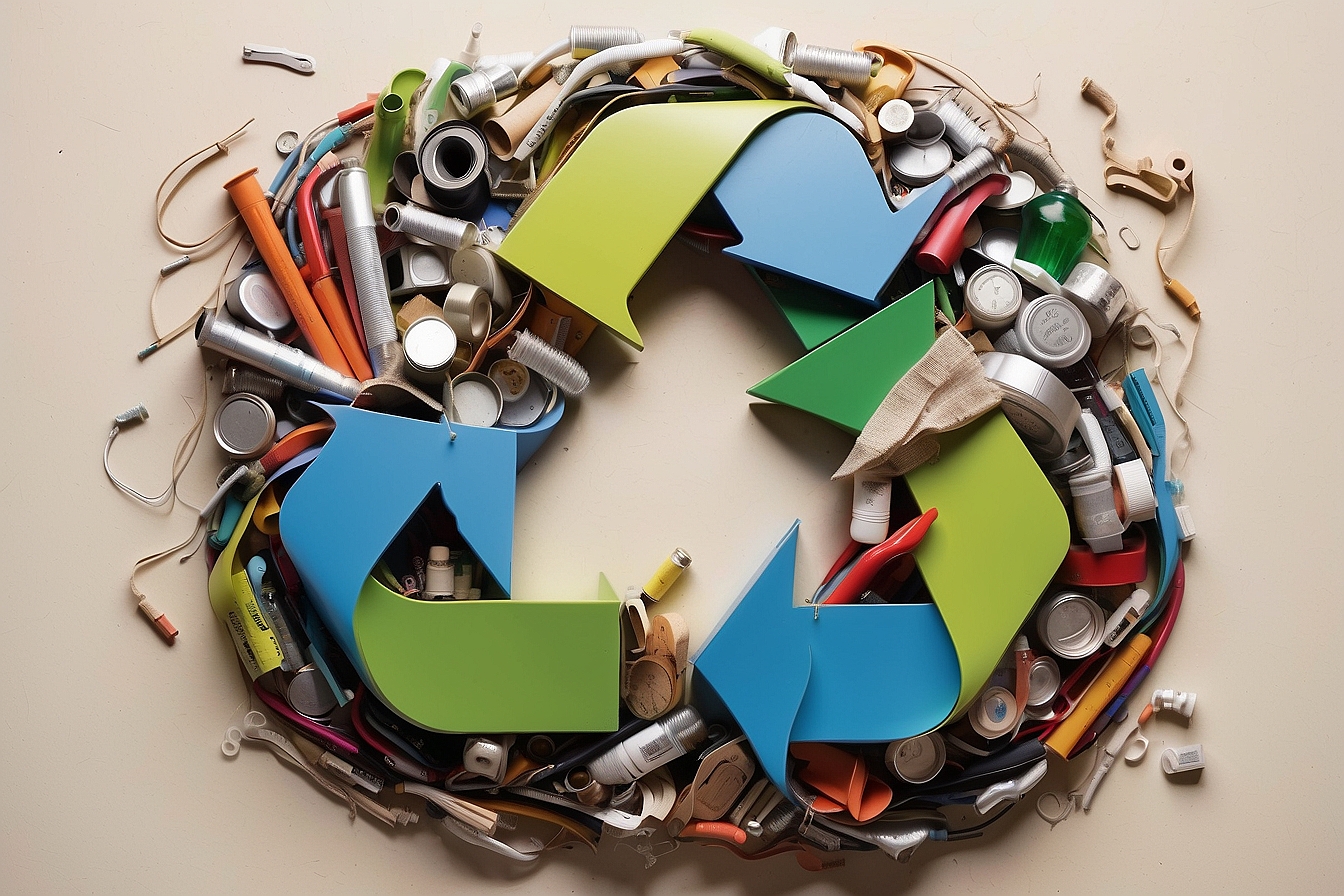The heart-wrenching sights of marine creatures caught in a web of plastic serve as a poignant reminder of the plight facing our oceans. Like so many others across the country, we’re deeply moved and concerned by this growing problem.
It’s quite staggering to think that around 8 million metric tonnes of plastic waste find their way into the ocean each year, isn’t it? In our latest article, we delve with gusto into some rather inspiring clean-up efforts that are boldly confronting this environmental challenge.
Keep reading to discover how these projects are making waves for the betterment of our oceans’ health – there’s hope on the horizon, and it’s truly uplifting!
Key Takeaways
- Ocean cleanup projects aim to remove harmful plastic waste from our oceans, with the ambitious goal of cleaning up 90% of floating ocean plastic by the year 2040.
- Innovative methods used in these projects include intercepting plastic in rivers before it reaches the sea, creating artificial coastlines for trapping debris and supporting marine life, and extracting and recycling plastics.
- To maximise efficiency, projects use smart steering to navigate ocean currents effectively and employ carbon offsetting strategies to minimise their environmental impact.
- Tracking progress is crucial; regular monitoring ensures that these initiatives are making a real difference in preserving marine ecosystems and biodiversity.
- Collaborations across scientific communities, local engagement, and continuous technological advancements are driving forces behind successful ocean cleanup efforts.
Overview of Ocean Cleanup Projects and Their Impact
Ocean cleanup projects are essential in addressing the problem of plastic pollution in our oceans. With a focus on preserving the ocean ecosystem and marine habitats, these initiatives aim to remove plastic debris and protect marine biodiversity.
The problem of plastic pollution in the oceans
Every year, millions of tonnes of plastic end up in our oceans, turning them into a soup of pollution that harms marine life. We see images of sea creatures entangled in plastic waste or mistaking it for food, which can lead to injury or death.
This growing tide of ocean plastic pollution disrupts entire ecosystems and threatens marine biodiversity.
Our seas have become the final dumping ground for these non-biodegradable materials. They break down into microplastics that are nearly impossible to extract completely. As guardians of environmental conservation, we witness the damage firsthand: coral reefs suffocating under layers of plastic and once-pristine beaches littered with debris.
It’s clear that urgent action is required to preserve our oceanic heritage and prevent further ecological harm.
Purpose and mission of ocean cleanup projects
Ocean cleanup projects aim to tackle the urgent issue of ocean pollution by removing plastic waste and preserving marine habitats. Our mission is to protect our oceans and marine life, ensuring a sustainable future for generations to come.
By implementing innovative technologies and sustainable practices, we strive to clean up 90% of floating ocean plastic by 2040, contributing to the restoration of ecological balance in our oceans.
Through smart steering and carbon offsetting, we are committed to minimising our environmental impact while effectively tracking progress towards achieving cleaner and healthier oceans.
As environmentally conscious individuals supporting conservation efforts, it’s crucial for us all to understand the purpose and mission behind ocean cleanup projects. Together, we can make a significant impact on protecting our precious marine ecosystems.
Methods and Technologies Used in Ocean Cleanup
To address the problem of plastic pollution in the oceans, ocean cleanup projects utilise various methods and technologies such as intercepting plastic in rivers, creating artificial coastlines, and recycling and extracting plastic from the ocean.
These innovative solutions are crucial for marine conservation efforts.
Intercepting plastic in rivers
Our ocean cleanup projects focus on intercepting plastic in rivers, which act as major sources of marine pollution. We deploy barrier systems and innovative technologies to capture and remove floating debris before it reaches the ocean.
This essential step prevents further contamination of our marine ecosystems, preserving the health of our oceans for future generations.
Rivers play a crucial role in transporting plastic waste into the seas; therefore, targeting these waterways is an effective strategy to mitigate ocean pollution. By intercepting plastic in rivers, we significantly reduce the harmful impact on marine life and contribute to a more sustainable environment for all living creatures.
Artificial coastline creation
Artificial coastline creation involves building structures to protect and stabilise coastal areas. This method helps prevent erosion, create new marine habitats, and provide a barrier against pollution entering the ocean.
By strategically placing artificial reefs or breakwaters, we can promote the growth of coral and other marine flora, which in turn supports diverse ecosystems and enhances marine biodiversity.
These artificial coastlines also act as filtration systems, trapping plastic waste before it reaches the open sea, contributing to cleaner shorelines and healthier marine environments.
Furthermore, sustainable technologies like eco-friendly materials for artificial coastline creation are being developed to minimise environmental impact while serving their purpose effectively.
Recycling and extraction of plastic
Having discussed the method of artificial coastline creation in ocean cleanup, it’s crucial to understand the pivotal role of recycling and extracting plastic. Once plastic waste is intercepted, extraction and recycling are essential processes.
The extracted plastic is then recycled into new products or materials, reducing the demand for new plastics and lessening environmental impact. This significantly contributes to marine habitat preservation, pollution solution, and sustainable technology.
To support conservation efforts effectively, it’s important to realise that these actions play a vital part in preventing ocean pollution and promoting ecological restoration. For environmentally conscious individuals looking to make a tangible impact on marine debris removal and coastal pollution management, supporting initiatives focused on recycling and extracting plastic proves invaluable in protecting our oceans’ sustainability.
Expected Impact of Ocean Cleanup Projects
Our target is to clean 90% of floating ocean plastic by 2040. We also use smart steering and carbon offsetting, track the progress regularly.
Target to clean 90% of floating ocean plastic by 2040
Our goal is to remove 90% of floating ocean plastic by 2040, contributing significantly to ocean sustainability and marine ecosystem preservation. We aim to achieve this through innovative methods and technologies, smart steering, and carbon offsetting measures.
By tracking our progress and implementing sustainable ocean initiatives, we strive towards effective plastic waste management and environmental protection for cleaner waterways.
Efforts focused on the target are essential for preventing ocean pollution, supporting conservation and environmental protection on a global scale.
Smart steering and carbon offsetting
Ocean cleanup projects utilise smart steering to efficiently navigate the ocean currents, optimising their path to intercept and collect floating plastic. By harnessing the power of technology and data analytics, these projects can strategically deploy resources to target areas where plastic accumulation is most concentrated, maximising the impact of their cleanup efforts.
This proactive approach ensures that limited resources are used effectively and helps in preventing further pollution of our precious ocean ecosystems.
In addition to smart steering, many ocean cleanup initiatives are also implementing carbon offsetting strategies to mitigate their environmental footprint. By actively working towards reducing greenhouse gas emissions and balancing any remaining emissions through carbon offset projects, these initiatives aim to neutralise their overall contribution to climate change.
This demonstrates a holistic commitment by ocean cleanup projects towards environmental conservation beyond just plastic removal.
Moving forward with such innovative approaches creates a positive momentum for achieving tangible results in combating ocean pollution while promoting sustainable practices for a healthier planet.
Track the progress
- Regular monitoring of plastic collection efficiency
- Conducting ongoing research on the impact of plastic clean – up on marine life
- Collaborating with scientific organisations for data analysis and continuous improvement
- Implementing real – time tracking and reporting systems for transparency and accountability
- Engaging local communities in monitoring and reporting plastic pollution levels
- Evaluating the effectiveness of technologies and methods used in ocean clean – up initiatives
Conclusion
In conclusion, ocean cleanup projects are crucial for reducing plastic pollution in the oceans. These efforts will help protect marine life and preserve our ecosystems. The innovative methods and technologies used show promise in making a significant impact on cleaning up our waterways.
It’s essential for environmental conservationists to support and advocate for these initiatives to ensure a cleaner and healthier future for our oceans.
FAQs
1. What are ocean cleanup projects?
Ocean cleanup projects are environmental conservation efforts aimed at removing trash and pollutants from oceans, preventing ocean pollution.
2. How does cleaning up the waterways help the environment?
Cleaning up waterways reduces harmful pollution in our oceans, protecting sea life and improving overall ocean health.
3. Can seabed cleaning make a big difference?
Yes, seabed cleaning is a crucial part of oceanic pollution control that directly impacts the condition of marine ecosystems by removing waste buried on the ocean floor.
4. Are these cleanup efforts only focused on large items or all kinds of pollution?
Ocean Cleanup Projects tackle both visible debris and smaller particles to thoroughly combat all aspects of environmental contamination in our waters.





